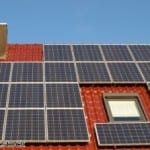Ergon Energy, the electricity network distributor for more than 90 per cent of Queensland, has introduced new standards – flagged here late last month – that will allow its solar PV customers to go off-grid, in a bid to cut exports of rooftop solar generation to the grid.
In a statement published on Thursday, Ergon said rooftop solar was continuing to boom in the state, with the company receiving about 1800 applications for solar PV connections a month.
The changes, it said, would allow the distributor to manage the impacts of this boom on the network, while allowing new customers to connect solar PV systems that did no export to the network, and paving the way for the addition of battery energy storage systems in the future.
“Ergon has 96,000 customers with solar PV installed across regional Queensland. That equates to 17 per cent of residential customers,” Ergon CEO Ian McLeod said.
“Considering there were fewer than 2000 homes with solar just five years ago, that’s an almost 5000 per cent increase, requiring Ergon Energy to manage the impacts on the network in terms of safety and reliability, while working to provide customers choice.”
As we wrote here in June, Ergon and Energex (which services the south-east corner including Brisbane) have both been moving in the direction of limiting or preventing households from exporting excess solar electricity back into the grid, despite its potential to accelerate grid defections and the so called energy network “death spiral”.
At the end of last month, Ergon confirmed to RenewEconomy that from July 1, it would allow non-exporting solar households with a capacity up to 30kVA to connect to the main grid with a reduced level of technical assessment compared with exporting systems.
McLeod described the new standards as consistent with the company’s commitment to give customers greater choice and control over how they source and use power.
Ergon today confirmed that its customers with solar PV systems with a maximum inverter capacity not exceeding 5kW export to the grid would receive a feed-in tariff of 9.07 cents a kilowatt hour, as set by the Queensland Competition Authority.
McLeod said the changes did not affect customers who already had a solar PV system and new customers would still have access to the government-mandated Queensland Solar Bonus Scheme.
“The greater benefit for customers comes from using the power derived from their solar PV system themselves rather than exporting it to the grid, so this option may suit some customers,” McLeod said.
“In the longer term, if the price of battery energy storage systems falls as predicted, then it may also create an option for customers to store the excess electricity created during the day for their own use at night.
“If the stored power is used during peak times, this has the potential to help manage future prices for all customers.
McLeod also stressed that the company believed no one would be disadvantaged by the new standards, adding that they would help keep the state’s solar PV industry viable, while reducing upward pressure on electricity prices for all customers.
“These new standards for connecting inverter energy systems (including solar PV systems) to the electricity network will allow more people to use our network for two-way flow of power,” McLeod said.
“We strongly believe our network can be an enabler of customer choice in terms of how they make and use electricity into the future.









